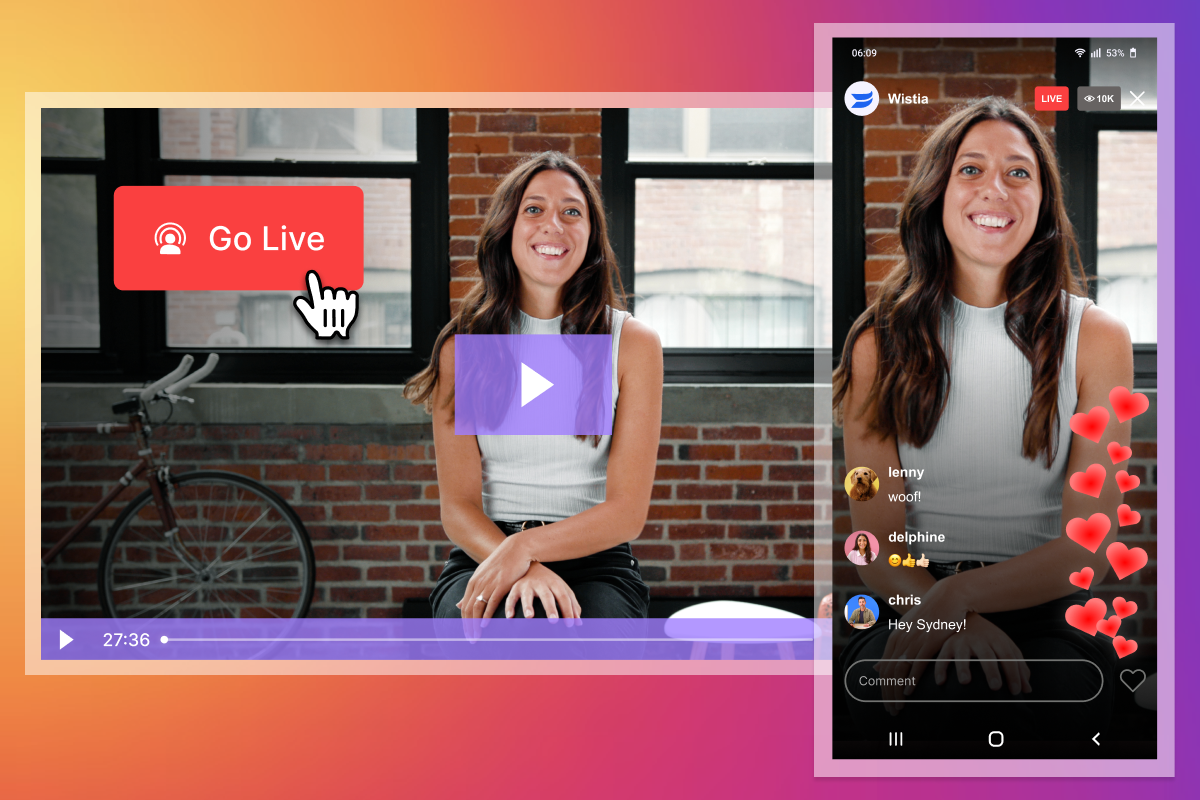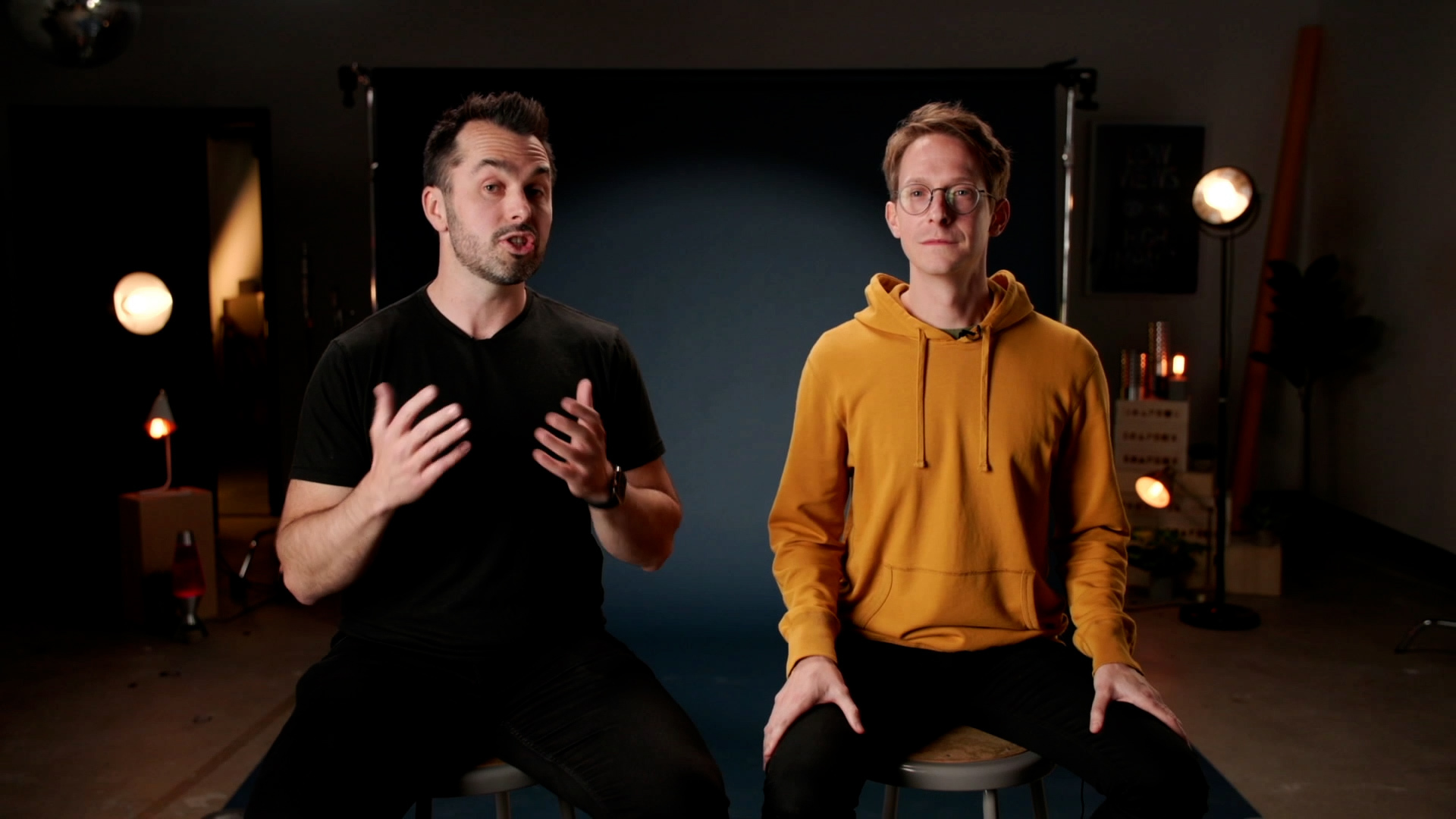Building a B2B Video Series: 6 Tips to Make Your Show Shine
July 19, 2021
Topic tags
Lisa Marinelli
Creative
You might not expect a brand like MailChimp to partner with a quirky media company like Vice to create a video series — but in 2020, Mailchimp did exactly that. Together, the two companies created Essentials, a show that took a unique look into how small businesses were coping during the pandemic. This collaboration proved there’s a lot more that video series can do for B2B companies beyond sheer product or brand promotion.
Mailchimp isn’t the exception here, either. Many other B2B marketers are investing in video and producing video series to engage existing audiences and attract new fans. ProfitWell, Salesforce, and Shopify are all examples of companies who have joined the revolution and are currently responsible for some of the most original B2B video content on the market.
The best B2B video series toe the line between education and entertainment by incorporating audience input and being easily accessible. To help you achieve that balance, here are six tips your business should consider before launching its next — or first — video series.
1. Find a fresh angle
Take a look around your industry and note what sort of content is most often created by your competitors. One strategy is to differentiate yourself by offering a show that touches on topics not regularly covered by others. This route requires a bit more leg work and a nuanced understanding of your target audience — but can reap large benefits from a differentiation perspective.
Alternatively, if you do want to tackle highly topical content that’s more commonly done in your industry, think about a new spin or hot take you can put on it. For example, suppose your business sells customer relationship management (CRM) software. In that case, you might create a video series highlighting real-life, people-centered support stories instead of sharing standard service tips like most other brands.
Salesforce’s The Story of Sales is a great case study of how to do things differently in order to stand out. The documentary looks to break common misconceptions about salespeople and what they do. Instead of a video series that’s full of sales jargon, The Story of Sales spins a unique tale about what it really means to work in sales and serve customers.
Finding a fresh angle can also mean trying a different format for your video series. If you see a ton of interview-style videos in your industry, you might think outside the box and create a reality show or game show. If you decide to go with the popular format, make sure you clearly highlight the X factor that makes your series better than a competitor’s — say, if you’ll be able to feature interviews with experts that are hard to get in touch with otherwise.
2. Host your video series on your website
B2B buyers will generally spend a fair amount of time researching products before they make a purchase. This makes sense because the products tend to be significant investments with complex, technical features. In order to learn about a product, customers will most often head straight to a company’s website.
This guaranteed traffic translates into a great opportunity to host your video series directly on your site. Making your video series only available on your site can help you access and analyze valuable viewer data and insights to help drive business for your brand.
“Making your video series only available on your site can help you access and analyze valuable viewer data and insights to help drive business for your brand.”
Remember that if people are only consuming your video series via YouTube or social media, all of that data belongs to those companies; you can’t actually reach out to individual subscribers through the platform. Wistia Channels is specifically designed to avoid these pitfalls and will sync subscribers to the marketing automation or CRM platform of your liking.
Create a dedicated channel for your video series on your website, so your audience can binge-watch without the distracting ads and video suggestions that come with third-party streaming platforms like YouTube. This keeps people focused solely on your product.
3. Embrace your niche
For marketers, one of the best long-term content strategies is to target a niche audience. We’ve found this is the most effective way to create quality content that resonates and drives affinity for your brand. To get started, interview some of your customers or review existing data to start understanding your audience.
“For marketers, one of the best long-term content strategies is to target a niche audience.”
Knowing your niche market well and having those open lines of communication can pay big dividends when it’s time to develop your video series. Your customers are already pretty knowledgeable about the industry they’re in. That means they’d be great resources when it comes to brainstorming new video series ideas.
Ask your current viewers what they would like to see in future episodes. For an interview video series, you might ask your audience questions about what guests they would like to see in an upcoming episode. You can also ask about specific topics or questions they want to see covered. You can use a tool like SurveyMonkey to create customized surveys and get accurate, individual feedback from email subscribers.
Use your audience’s input to guide new episode ideas for your video series. You don’t need to use every suggestion you get, but you can definitely use their input as a launching point for gaps in your content or to help concept new ideas. At the end of the day, what you want is to come up with topics that speak to your niche audience’s top interests and pain points. This keeps you plugged into your customer base and shows people that you understand what they need from you.
4. Start with a modest budget — then scale
Video production is often seen as a costly and time-consuming investment — but it doesn’t have to be, especially at first. In fact, many B2B videos are affordable and easy to create. The content is often educational, and you already have products on hand, so it doesn’t necessarily require an ensemble cast, product acquisition, or a special effects budget.
Moz’s Whiteboard Friday is a prime example of a cost-friendly series that leans more into its educational content than its production value. They’ve run this series the same way since 2007, with a lesson being written onto a whiteboard and explained to the audience in simple terms.
Your video setup can be pretty minimal to start. All you need is a camera, microphone, and lighting (natural or artificial). For the camera, you can use a quality webcam or smartphone. We’ve even put together our own list of affordable webcam and microphone setups to help you create videos that look good.
Once you’re feeling pretty comfortable producing and promoting video content, consider scaling your efforts. Larger-scale projects may call for more of a financial investment into guests or more advanced gear — but they can also work overtime when it comes to setting your brand apart. However, it makes sense to start with more manageable projects so that you can prove your concept works and then grow from there.
5. Pick a realistic format and cadence
Unlike a cult-favorite classic like The Simpsons, some B2B topics come with an expiration date — and that’s ok. A B2B video series doesn’t have to run indefinitely, and you should think about the release frequency upfront.
If there’s a hot new topic within your industry, you may want to create a video series that only runs a few episodes and comes out soon. This will help your business stay current while covering all relevant information about the topic. While interview shows are easy to keep running for a long time, a documentary series around a specific topic can be a 4–5 episode affair if that’s what the topic calls for.
If your industry is constantly changing and trends crop up rapidly, always be on the lookout for opportunities to come up with new content ideas. Putting together a miniseries or limited series are great ways your business can delve into a timely topic and stay top of mind with your audience, without committing resources to a long-term series.
6. Don’t be afraid to get creative
B2B businesses often make the mistake of not believing they have as much freedom with their content marketing as B2C brands do. However, if you flex your creative muscles the right way, your business can deliver a series that’s just as fun to watch — and make.
Sound too good to be true? Well, not to brag, but we like to think we’ve created a case in point ourselves. Our Webby Award-winning One, Ten, One Hundred was designed to educate viewers about video marketing, but we wanted to entertain folks as well. Along with informing our audience, we got them invested in the team at Sandwich Video and their journey throughout the episodes.
If you really want to get creative with your video series, consider building a branded studio. While established B2B brands might have large budgets for their studios, don’t be intimidated — you can start one as a small project with a reasonable budget. With your own studio, you’ll be better able to spark great video series ideas and future shows.
Ready to launch your B2B video series?
Creating a successful B2B video series takes a lot of practice and patience. It’s rare that your video series will become a smash hit overnight, but that doesn’t mean it won’t gain traction over time. Implementing these tips will give you the competitive edge you need to stand out in a crowded video market.







